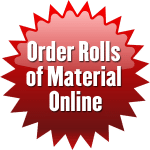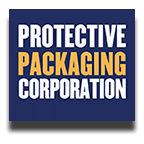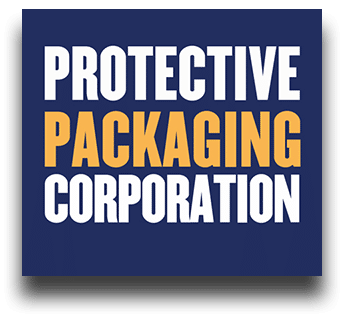
| MIL-PRF-121 KRAFT/POLY Materials Available in 36″ or 48″ rolls 100 yds long | |||
| Protect PK #1 | Mil-PRF-121 Type I Class 1 | ||
| Protect PK #18 | Mil-PRF-121 Type II Class 1 | ||
| Protect PK #22 | Mil-PRF-121 Type II Class 2 | ||
MIL-PRF-121G
30 April 2001 SUPERSEDING MIL-B-121F 16 June 1989 PERFORMANCE SPECIFICATION BARRIER MATERIALS, GREASEPROOF, WATERPROOF, FLEXIBLE, HEAT-SEALABLE This specification is approved for use by all Departments and Agencies of the Department of Defense. 1. SCOPE Scope. This specification establishes the requirements for heat-sealable, greaseproof, waterproof, flexible barrier material used for the preservation of military supplies and equipment. 2. REQUIREMENTS First article – When specified, a sample shall be subjected to first article inspection in accordance with 4.2. Material – Barrier materials shall be made from such materials and by such processes as to ensure compliance with the performance requirements of this specification. Construction – The barrier materials shall be constructed of one or more plies in any manner that ensures compliance with the performance requirements of this specification. – Splices. A roll shall not contain more than 2 splices (3 pieces). Splices within rolls shall be even, extend the entire width of the roll, and shall not come apart during unwinding of the roll. Splices shall be flagged at both ends of each splice with colored markers. Form – The barrier material shall be furnished in rolls. Rolls. Unless otherwise specified, the width of roll material shall be 36 inches, with a tolerance of plus 1/4 inch or minus 1/8 inch. The average length of roll material shall be not less than 200 yards. The length of any individual roll shall be not less than 195 yards. The roll material shall be uniformly wound on non-returnable cores. The core’s inside diameter shall be not less than 3 inches, with a tolerance of plus 1/8 inch. The length of the core shall be equal to the width of the roll material, with a tolerance of plus 1/8 inch. The core shall be rigid to prevent distortion of the roll during use and shipment conditions. Each roll shall be restrained to prevent unwinding. Sealing – The material shall exhibit no delamination of the heat-sealed area when sealed according to the manufacturer’s recommended conditions. Each roll of barrier material shall include a tag secured to the roll core with the sealing instructions for heat-sealing on continuous and jaw-type sealing equipment. The tag shall be visible upon opening the unit package. Identification of material – The specification number, type, manufacturer’s name, manufacturer’s designation, month and year of manufacture, and lot number shall be clearly and legibly marked using water-resistant ink on the backing surface of the material. The color of the markings shall be red. This complete group of markings shall be continuous lengthwise and the distance between groups of markings shall be not greater than 6 inches. A complete group of markings shall appear once in each 12 inches of width of the roll. The letters and figures shall be not less than 1/8 inch high. Workmanship – Barrier material surfaces shall be free from any foreign matter. The barrier material edges shall be cut and trimmed of any selvage. Barrier material shall be free from holes, tears, cuts, sharp creases, wrinkles, or other imperfections. Performance requirements – The performance of the barrier materials shall meet the requirements specified in table I, when tested in accordance with 4.6.TABLE I. Performance requirements.
| PROPERTY | REQUIREMENT |
TEST PARAGRAPH REFERENCE |
| Seam Strength 1. As received material sealed & tested: a. At room temperature (separation-inches) b. At 100°F and at 160°F (separation-inches) 2. Sealed before aging at 160°F for 12 days and tested: a. At room temperature (separation-inches) b. At 100°F and at 160°F (separation-inches) 3. Sealed after aging at 160°F for 12 days and tested: a. At room temperature (separation-inches) b. At 100°F and at 160°F (separation-inches) | No separationNo separationNo separationNo separationNo separationNo separation | 4.6.2 |
| Waterproofness (as received and aged) | No delamination No evidence of water leakage | 4.6.4 |
| Oil Resistance (as received and aged) | No delamination No evidence of oil leakage | 4.6.1 |
| Puncture Resistance Type I Type II | 6 lbs (min) 4 lbs (min) | 4.6.1 |
| Tensile Breaking Strength Type IType II | 25 lbs/in. width (each direction) (min. avg.) Type II 17 lbs/in. width (each direction) (min. avg.) | 4.6.1 |
| Tearing Resistance Type I Type II | 150 gms. (each direction) (min. avg.) 100 gms. (each direction) (min. avg.) | 4.6.1 |
| Resistance to Curl | No curl in excess of 5% | 4.6.1 |
| Aging Resistance | No delamination | 4.6.3 |
| Low Temperature Flexibility | No delamination, cracking, or ply separation | 4.6.5 |
| Blocking Resistance | No blocking, delamination, or rupture | 4.6.1 |
| Contact Corrosivity | No induced corrosion in the contact area | 4.6.1 |
| Water Resistance of Marking | Markings shall remain clear and legible | 4.6.1 |
| Bursting Strength Type I Type II | 45 psi (min) 30 psi (min) | 4.6.1 |

